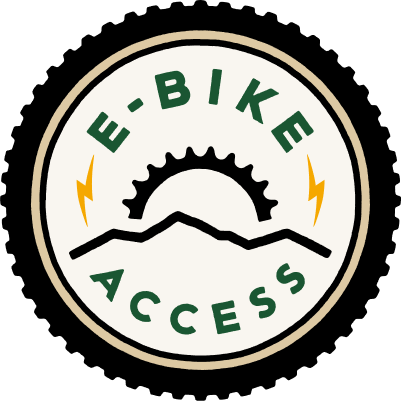
Please ride responsibly. Your safety and the safety of others depends on it.
Our right to continue riding in various jurisdictions depend on it too. Reckless riding by a few jeopardizes our right to continue riding.
Here are our suggestions on riding politely (starting with our adaptation of rules from Ft. Ord Monument, and ending with the Slow and Say Hello rules).
Passing Hikers, Walkers, Runners
Shouting “on your left” isn't the best strategy. It's ambiguous, and hikers might move to their left by mistake. It can also startle hikers.
A better approach, which applies whether you are passing from in front or behind:
Greet the hiker – "Hello". "I'm passing slowly." Or ring a bill if you have one, although ringing a bell by itself isn't enough. If you don't have a bell, consider getting one. It's one sign to hikers that you are a considerate rider.
Slow down to about the same speed as the hiker. Otherwise, they might panic and consider writing a letter of complaint to whomever owns the land you are riding on.
If there's not enough room to pass safely, yield.
If you are approaching from behind, and the hiker appears confused and stops in the middle of the trail, stop and politely say something like “pardon me, may I pass?”
In short, ride as you would if the hiker was your grandmother—or the head ranger or the person deciding whether to permit bicycles to continue riding there.
Passing Horses/Equestrians
The surest way to hurt yourself and others is to speed past a horse. Horses are big, they startle easily, and they may throw their riders, causing injury or death. It is extremely important for mountain-bikers to be careful around horses.
Greet the equestrian and the horse. Let them know you are there and would like to pass when it is safe for everyone. This is true whether you are approaching from the front or behind.
Ask the equestrian for instructions on how to pass – it may be necessary for you to stop completely and let the horse pass, depending on the width and condition of the trail, or to walk your bike.
Pass slowly and steadily, but only after the equestrian gives you the go-ahead. Sudden movements can spook a horse.
Passing other Cyclists.
Not all riders have the same ability or experience. And some startle more easily than others. Be polite when passing other cyclists. If you are coming up behind them, let them know you are there and are passing. Also let them know if there are more riders behind you and how many. Keep it mellow. Control your speed. Expect the unexpected.
Special Word for E-cyclists
All of this applies in spades to riders of e-bikes. Not just for the safety of you and others, but so that you can continue riding an e-bike. The owner of the land you are riding on, whether a government agency or private owner, might be facing pressure from other users to prohibit e-bikes. Riding recklessly is the surest way to lose the right, for all of us. And don't be shy about setting a good example and encouraging reckless riders to knock it off.
From the Slow And Say Hello Trail Partners website:
Obey speed rules. Obey the 15 mph speed limit, and maintain control of your bike; slow to 5 mph when approaching other users and blind turns.
SHARING THE TRAIL
Yield to all other trail users. If you’re riding downhill, you should also yield to uphill cyclists.
Obey speed rules. Obey the 15 mph speed limit, and maintain control of your bike; slow to 5 mph when approaching other users and blind turns.
Expect to encounter others moving slowly. Always reduce your speed and stop if necessary for safe passing.
Move to the side of the trail when passing on narrow trails. Stop, if necessary before passing.
SAFE COMMUNICATION
Don’t tune out. Wear only one ear bud so you can hear others coming.
Avoid startling other trail users. Make your presence known, particularly when approaching from behind. Bells help at a distance, but your voice is better.
Ask for an equestrian’s direction to pass. When you approach an equestrian, stop and say “hello!”, stay visible, and ask the rider if it’s okay to pass. Your voice tells a horse you are human, not a predator.
